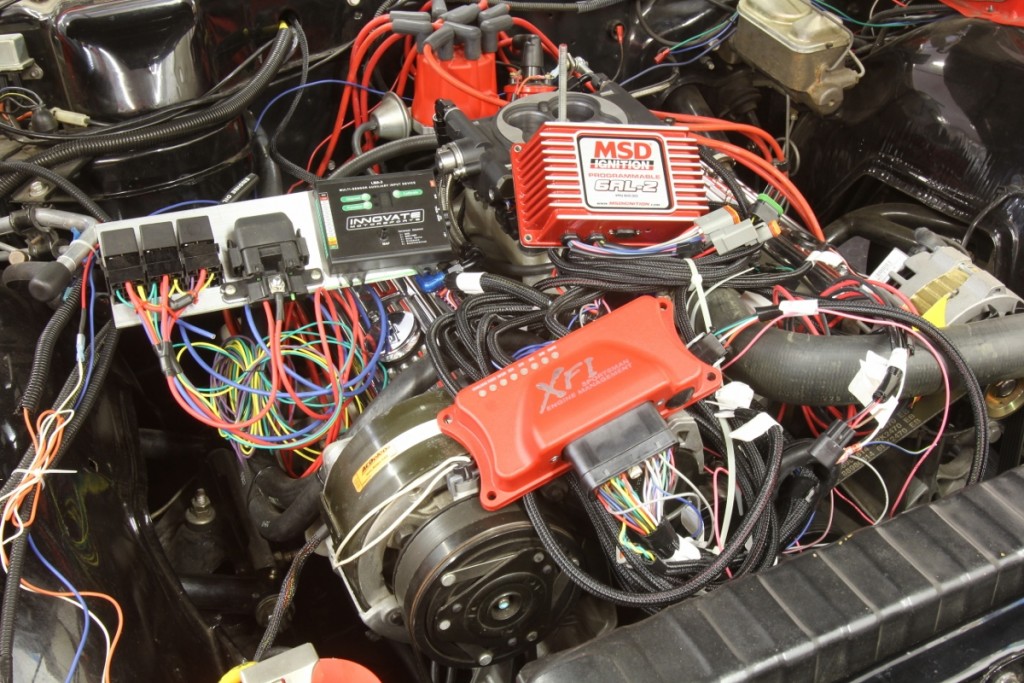
As digital controllers for fuel and spark become more popular on custom-built performance cars, it’s very easy to fall victim to RFI/EMI interference. We’ll take a look at some ways to avoid the major electronic noise land mines that are secretly buried in your engine compartment.
How to combat a new devious adversary – RFI and EMI
Words and Photos By Jeff Smith
“It was working perfectly yesterday! What happened?”
It’s an increasingly common lament. We just installed a 4L60E into our small-block ’64 El Camino. The electronically-controlled transmission requires the use of a stand-alone controller, so we can retro-fit it into an earlier car. The first quick test drive went well, but on a second, longer drive, the trans suddenly began to downshift for no reason and then began acting erratically, as if possessed by some automotive demon. The hand-held controller immediately displayed the message “Comm Error.”
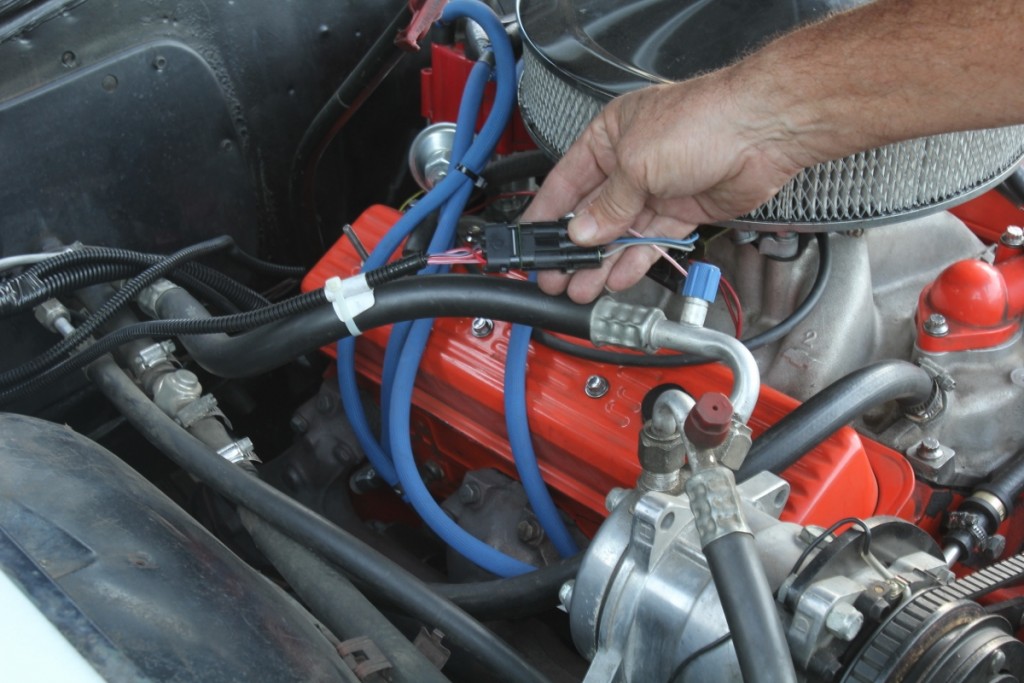
We had just installed a 4L60E electronically-controlled overdrive into our ’64 El Camino when it began shifting erratically — caused by the TPS wires routed too close to what we thought were good, spiral-wrap spark plug wires. We simply relocated the TPS sensor wires a few inches away from the spark plug wires, and the issue disappeared.
It’s human nature to immediately blame the component you don’t understand. Most car guys don’t understand (or trust) digital components like electronic control boxes, so therefore, they must be to blame when something goes awry. In our experience, it has turned out not to be the fault of the digital component, but more likely an installer error.
We eventually discovered the solution to our trans controller problem. But, just offering up the simple solution doesn’t begin to tell the real story. Through the course of our investigation, we discovered a multitude of potential causes for these digital disasters — and their solutions. By explaining the causes and results, you will discover a little more about the invisible war going on under the hood. It’s almost as if that electronic interference is slashing a ninja-like electronic sword throughout the digital side of your car. And, if you’re like us, we didn’t have a clue. It was time for some answers
Let’s start with some basic electronic facts that occur every time your engine starts. All automotive ignition systems use either a single or multiple coils to transform 14 volts DC to the roughly 25,000 volts necessary to light that fire in the combustion chamber. One unfortunate result of transmitting all this high voltage through a spark plug wire: The high-energy magnetic field created around the plug wire over its entire length. This energy field is also electronically noisy, creating what is called radio frequency interference (RFI). This noise can easily be heard on an AM radio, as this interference occurs in the same frequency as the AM radio band.
Far more harmful digital problems also occur because of electromagnetic interference (EMI) that can create difficulties with any digital control systems. This EMI interference is more difficult to diagnose and measure.
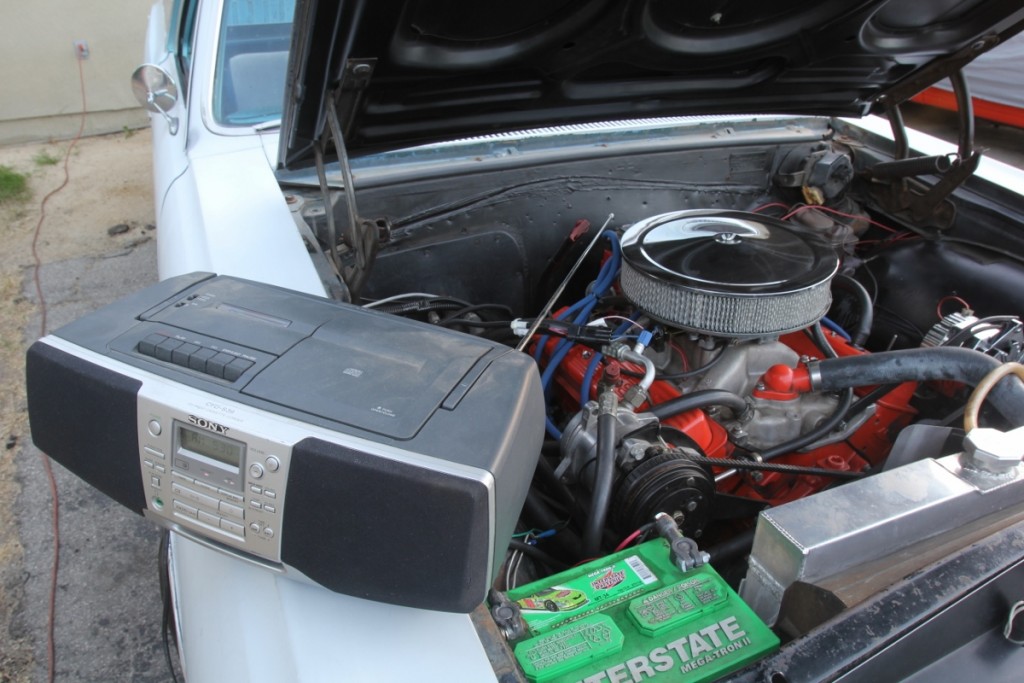
We performed an interesting backyard RFI test using this old AM radio boom box equipped with a mast antenna and tuned to 580 on the dial. With the engine running, we pointed the antenna at the spark plug wires. This created a massive amount of RFI noise from the radio. Directing the antenna 180-degrees away from the wires minimized the noise. This is a classic illustration of RFI.
The majority of the RFI noise addressed in this story can be attributed to the secondary side of the ignition system — mainly the coil wire, rotor gap, and spark plug wires. Another source of interference is often called supply line noise. This can be caused by changes in load that affects charging system voltage. As we will see, large load dumps from high-amperage fans, relays, and other electrical devices often cause havoc within the electrical system that is difficult to trace. A common solution is to attach a capacitor to the circuit, which acts like a cushion or accumulator that dampens the voltage surges. While these capacitors do work well in certain applications, the best approach is to solve the problem by acting on the source of the noise. If the problem does not improve, then you can try a capacitor.
Since this story addresses issues with digital controllers, this is a great place to emphasize why the instructions on virtually all digital controllers, such as EFI ECUs, always require connecting the large power and ground wires directly to the battery. The purpose is to improve the performance and life expectancy of the controller. Think of a storage battery as a very large capacitor that can safely absorb electrical noise in the form of damaging voltage spikes.
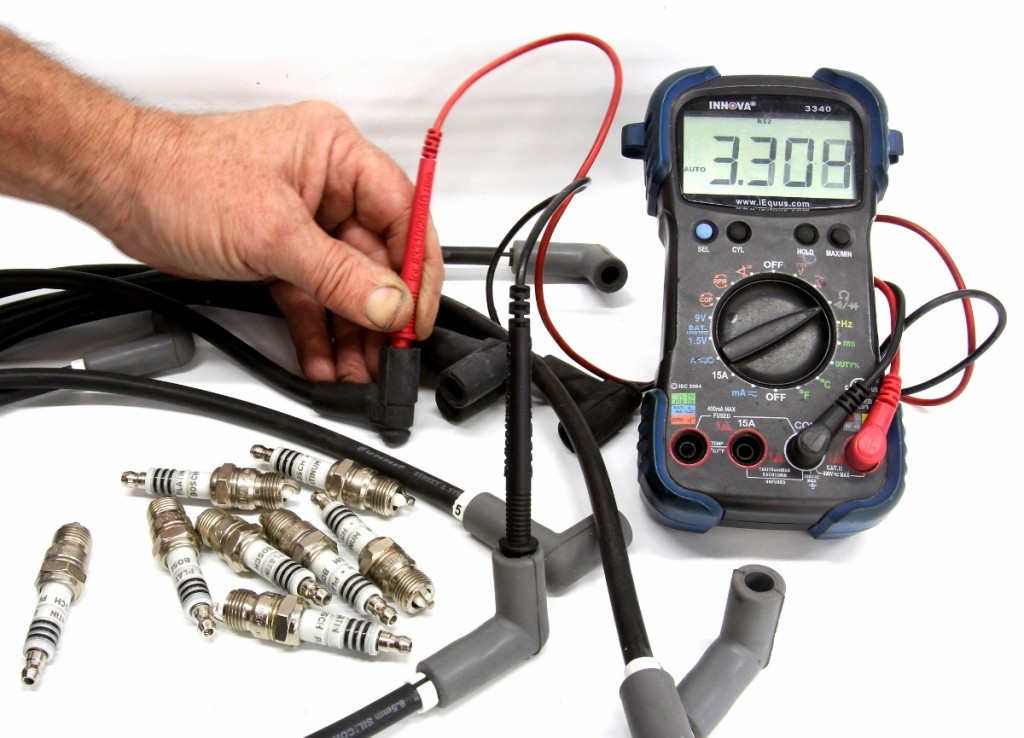
Most spark plugs will be resistor-style, but it’s important to check because non-resistor spark plugs can cause massive RFI/EMI problems for digital devices. Never run non-resistor spark plugs or solid core spark plugs wires on any engine. Quality spark plug wires use a spiral wrap around the conductor to suppress RFI/EMI, but there is much more to this story. EFI tuners tell us they’ve discovered extremely low-resistance plug wires tend to generate more RFI/EMI noise.
We don’t have the space nor the expertise to get into exactly how these voltage spikes occur. The simplistic explanation is spikes are often created by merely turning high-current electric devices on and off. Components like starter motors, cooling fans, A/C solenoid clutch cycling, nitrous solenoids, and other devices all emit potentially dangerous voltage spikes that, if not properly insulated from a digital control unit like an ECU or trans controller, can cause serious damage.
By mounting the power leads from a digital ECU directly to the battery, the battery protects the ECU by dampening those voltage spikes. This also means you never connect the ECU power leads to a common terminal where other devices, such as cooling fans or nitrous solenoids, are connected. Keeping all sensitive digital devices insulated from other high-current-draw devices is a good way to ensure the digital device will operate as intended.
Of course, no electrical story would be complete without a discussion of the importance of ground wires. Proper grounding of digital devices is essential. Because so many digital sensors operate on the 0- to 5-volt scale, it’s important the ground side of the circuit not be affected by resistance. This means multiple grounds are necessary to ensure voltage signals delivered to your digital controller are as accurate as possible. Even long before the days of digital control, the factories understood the benefit of multiple grounds. If you’ve worked on ’60s cars, you probably remember those small, copper ground straps that grounded the engine to the body and the body to the frame.
As we referenced earlier, a major source of RFI/EMI is the noise emitted from spark plug wires. From the earliest days of the automobile right up through the 1960s, solid core wires were the clear choice, using only a simple urethane covering to prevent the electrical energy from leaking outside the wire until it arrived at the spark plug. While functional, this simple wire generates pathological electronic noise that is easily picked up and amplified on an AM radio — hence the term radio frequency interference (RFI). The first idea employed to reduce this noise was high-resistance spark plug wires using a fiberglass weave that was dusted with a conductive carbon coating. Unfortunately, these high-resistance wires also drastically reduced the voltage to the spark plug, reducing engine performance.
The solution: spiral-wrap spark plug wires. These wires use a center conductor core material surrounded by an insulating cover. This insulation is then wrapped with a very fine stainless steel wire looped in a tight spiral over the entire length of the wire. Another layer of insulation is laid over the top of the spiral wrap to complete the plug wire.
This spiral wrapping helps to cancel or at least significantly reduce the amount of RFI emitted by the plug wire, if constructed properly. While this does work, there are issues surrounding certain techniques used by some spark plug wire manufacturers that reduce how well EMI reduction actually works.
This brings us to the intersection of aftermarket digital ECU controls for systems like electronic fuel injection and automatic transmission control, and the storm of interference bouncing around under the hood of your car — much of it originating from long spark plug leads that act like antennas transmitting all kinds of noise. Given this situation, the chance for EMI-induced problems with digital components is highly likely. Despite this dire situation, solutions to these problems are also easy if you know where to look.
RFI/EMI is an invisible enemy. You can’t see it, you can’t feel it, but with the right test, you can measure it and figure out how to control it. Here’s what happened in our situation. Our TCI EZ-TCU digital controller for a 4L60E transmission requires a very critical throttle position sensor (TPS) output. This output is delivered as a 0- to 5-volt scale with a very low voltage setting delivered as idle.
Unfortunately, we routed these TPS wires directly underneath a closely-bundled set of spark plug wires travelling over the top of the passenger side valve cover. The EMI output from the spiral-wrapped plug wires was intense enough to interfere with the TPS signal, causing our transmission’s shifting problems and the Comm Error reading. Our solution was to merely increase the distance between the TPS and spark plug wires, and the problem disappeared. This is because while the magnetic field (and the EMI it creates) around the spark plug wires is concentrated close to the wire, it dissipates within a few inches of the wires. Another possible solution is to avoid routing digital sensor wires parallel to spark plug wires. If they must cross, they should do so at 90 degrees and with sufficient space to minimize the effect of the magnetic EMI field.
But sometimes, moving the TPS wires or the spark plug wires may not be possible, or the ECU’s location positions it very close to the plug wires. In this case, there are still solutions. Shielding the sensor wires is a good idea, but a better solution is to find a way to reduce the intensity of the RFI in the first place. This will demand a different style of spark plug wire. We’ll save that discussion for a later story. There appears to be a link between low resistance plug wires and higher levels of RFI/EMI.
We spoke with Thomas Kise, technical training manager for Holley’s EFI program, and one suggestion he made was to always use dielectric grease between the spark plug boot and the end of the spark plug. This material is used to stop voltage leaks outside the spark plug boot and also helps to reduce EMI issues. Permatex, for example, sells a 3-ounce tube that’s inexpensive.
Managing RFI/EMI is more than just dealing with spark plug wires. There are other dangerous EMI emitters that you might not consider. Many car builders don’t realize that even the ubiquitous CD ignition system can cause problems. Capacitive discharge (CD) ignitions work in a much different manner than OE inductive ignition systems. Induction ignitions like the GM HEI, for example, apply 12 volts to the positive terminal on the coil and induce a spark when the negative side of the circuit is interrupted.
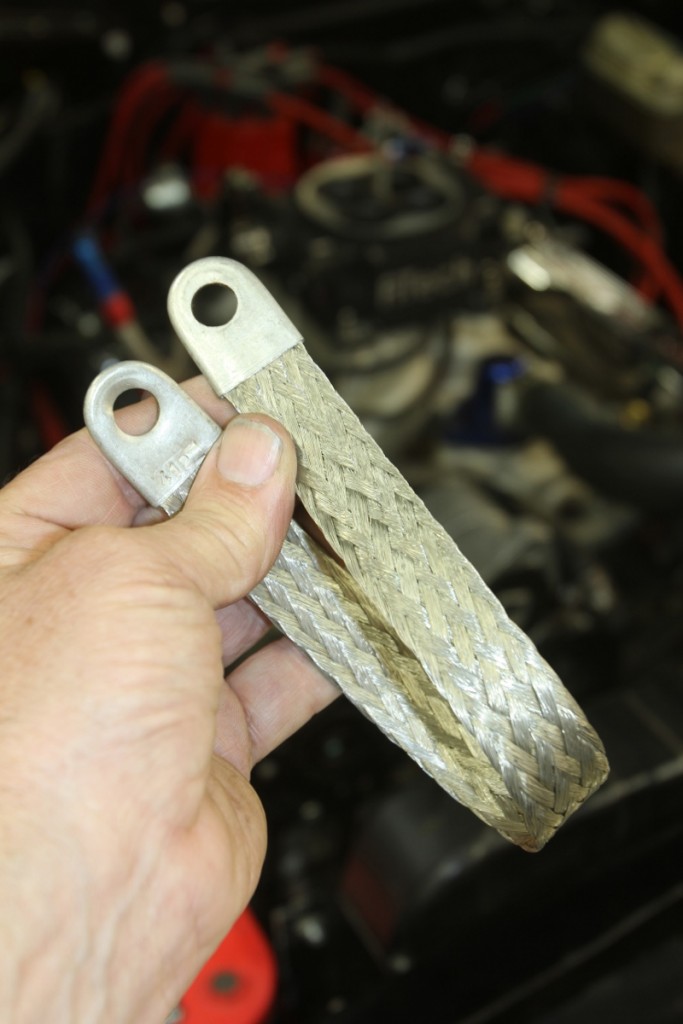
Good grounds are especially important when fighting noise issues with digital components. These wide, woven ground straps may not be pretty, but they serve a purpose of assisting in negating stray voltages. Also make sure there is a clean ground between the chassis, body, and the engine.
With a CD system, a capacitor is charged with 500 volts and that voltage is applied to the positive side of the coil. So, now that orange wire running from your MSD 6AL box to the coil is carrying 500 volts every time a spark is triggered. So even at idle, this wire is triggering with 500 volts 3,400 times per minute at an idle speed of 850 rpm (850 x 4 = 3,400 because one revolution only fires four cylinders). That number is actually much higher because most CD systems multi-strike at low rpm.
Our friends at FiTech related a story about a customer who complained his FiTech fuel injection system wouldn’t even start the engine. After diagnosing the installation, they discovered the customer had routed the EFI’s critical rpm sensor wire directly parallel with the orange MSD coil power wire carrying those 500-volt signals. The CD’s high-voltage signal was so noisy that it completely disrupted the rpm signal essential for the EFI to operate — which is why the engine would not start. The solution took two seconds; they relocated the rpm trigger wire away from the MSD orange and black wires to the coil, and the engine immediately started and ran as intended.
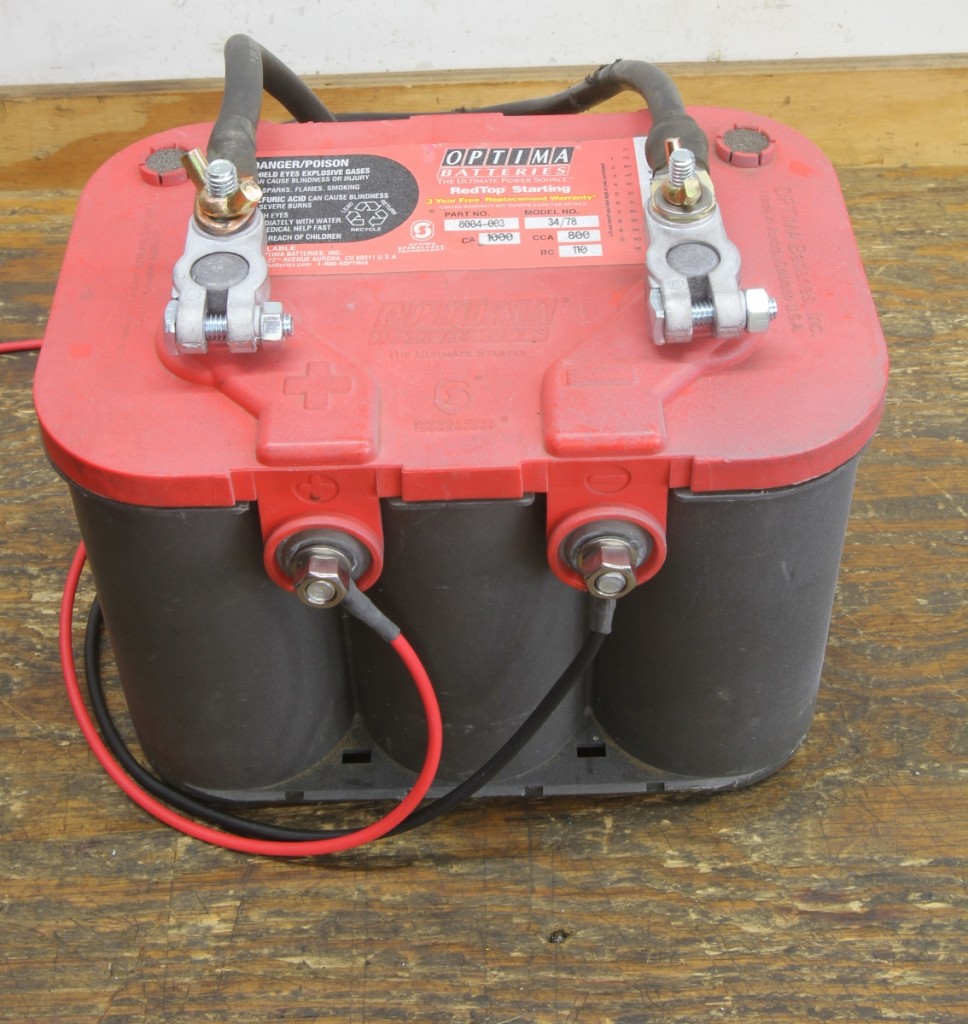
Attaching any digital controller directly to the battery is an ultra important step to allow the ECU to operate without damage from high-current components that can cause what is called electronic fly-back damage. An excellent way to attach the ECU leads is with a dual terminal battery where the top terminals will feed the starter, while the side terminals offer a location for separate leads to the ECU.
These first two situations reveal how difficult it is to diagnose these problems since there are no obvious tests that reveal the source of the problem. Another example is even a bit more obscure, but just as relevant. Modern transmissions have replaced cable-driven speedometer outputs with an electrical vehicle speed sensor (VSS) located on the transmission tail shaft that produces an AC (not DC) voltage signal. This simple voltage signal is highly susceptible to interference, which is why if you’ve ever looked at the VSS output wires, they are twisted over their entire length. By minimizing the wires being parallel, this reduces the effect of EMI. Another way to protect these signal wires is to cover them with shielding.
The VSS signal can be corrupted by different sources of EMI interference, but a common issue is noise created by a bad alternator diode. Alternators are actually alternating current (AC) generators that employ a string of diodes to convert AC into DC voltage. If even one diode fails, AC current will bleed its way through the electrical system, and we’ve seen an example where the electronic speedometer on a newer car indicated 20 mph with the engine running while the vehicle was sitting still. Once the alternator was repaired, the AC issue was eliminated, and the problem disappeared.
Electric fans using brushes and commutators can be another source of EMI because the motor is essentially switching poles at a very fast rate, which can be considered a simplistic definition of frequency. Some interference is generated by the motor, but most of the RFI/EMI will be projected from the power and ground wires leading to the motor. Twisting these leads together will help reduce the intensity of the radiated noise. Separating these wires from any VSS, rpm, or TPS sensor wires, or shielding these wires is also highly recommended. The OEs have now switched to brushless electric motors for high-amperage items like cooling fans to reduce EMI.
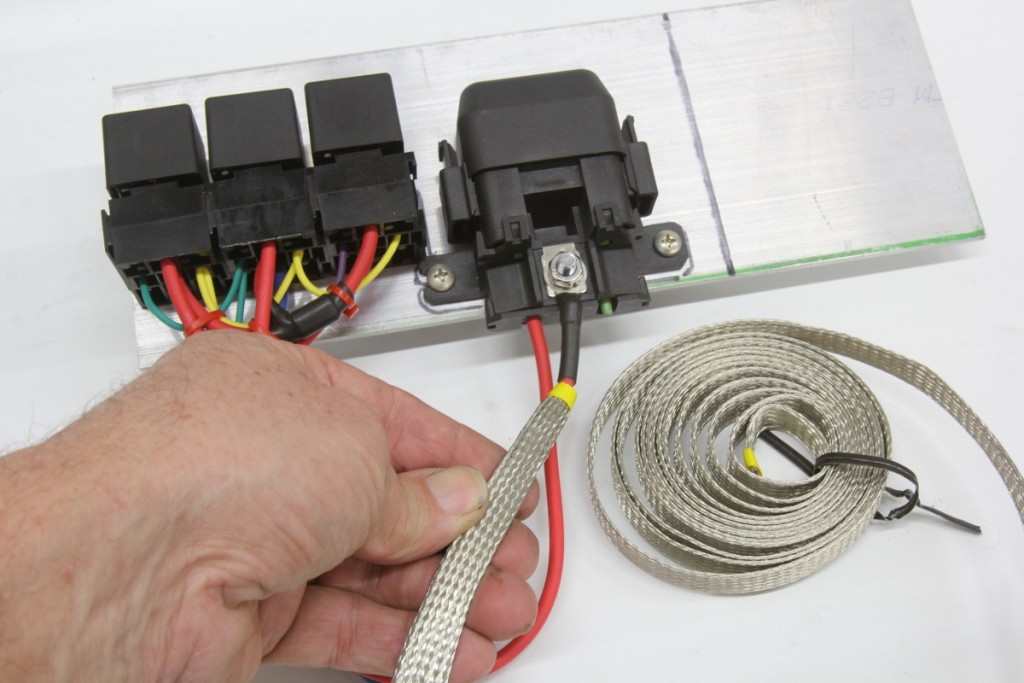
Another good shielding covering is made by TechFlex and called Flexo-Shield expandable sleeving. It is a high-performance EMI shielding sleeve that cuts easily with scissors and works to protect sensitive digital sensor cabling or in this case, covering the high current cables driving a high-amp electric fan relays.
These are just a few examples of the kind of RFI/EMI problems that exist out there in the real world of high-performance cars. This story does not pretend to deliver all of the possible RFI/EMI problems, but hopefully we’ve at least pried open the lid from this Pandora’s box of obscure interference issues and offered some insight into possible solutions that can make your digital control component much happier. So, before you toss that expensive electronic controller in the trash bin because it has caused you all kinds of grief, try a few of these remedies. It’s quite possible your controller or its sensors are the victim of an attack by the invisible army of digital interference.
Parts List
| Description | PN | Source | Price |
| escription | 8804 | Summit Racing | $16.81 |
| Permatex dielectric grease, 3 oz. | 22058 | Summit Racing | $9.99 |
| MSD shielded two-wire connector | 8862 | Summit Racing | $31.57 |
| MSD noise filter capacitor | 8830 | Summit Racing | $40.22 |
| DEI Titanium Sleeve, ½” I.D. x 4 feet length | 010475 | Summit Racing | $25.97 |
| Powermaster CS130 alternator, 140 amp | 478021 | Summit Racing | $165.97 |
| TechFlex expandable shielding, 3/8-inch | FSN0.38V | DigiKey.com | Call |
Sources: Design Engineering, Designengineering.com; Holley Performance Products, holley.com; MSD, msdignition.com; Permatex, permatex.com; Powermaster, powermastermotorsports.com; TechFlex, Techflex.com

















